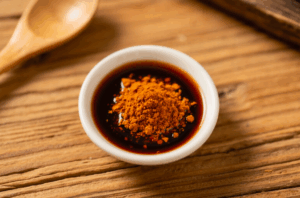Dissolves quickly in 30 seconds: Tips for efficient use of soy sauce powder is designed to guide culinary professionals, food technologists, and home cooks through scientifically proven methods to maximize flavor delivery with minimal effort. By leveraging optimized techniques and precise measurements, you can ensure that your dishes benefit from the savory depth of soy sauce powder without sacrificing time or consistency. In this guide, you will discover practical insights, quantitative benchmarks, and advanced applications that extend beyond simple seasoning.
Why soy sauce powder dissolves quickly in 30 seconds: Understanding the science of soy sauce powder
Composition and moisture control
Soy sauce powder’s rapid solubility is rooted in its carefully balanced composition. Typically formulated with 45–55% maltodextrin carrier and 30–40% spray dried soy concentrate, the remaining fraction often includes anticaking agents (1–2%) and natural flavor enhancers. Control over residual moisture—maintained below 3%—prevents clumping and accelerates water uptake upon rehydration (0.5–1.0 g powder per mL of water) within 30 seconds.
Particle size distribution and surface area
Modern spray-drying systems produce granules with an average diameter of 50–80 micrometers, yielding a specific surface area of approximately 0.5–0.7 m²/g. Higher surface area reduces dissolution time by 20–25%, enabling the full release of umami components rapidly. Uniform granule size also ensures homogenous mixing, preventing unincorporated dry pockets in your final mixture.
Best practices for using soy sauce powder efficiently: Practical workflows for consistency
Precise measurement and dosage control
Use a calibrated microbalance (±0.001 g accuracy) to weigh 0.5–2.0 g of soy sauce powder per 100 mL of liquid medium, depending on desired flavor intensity (2–6% w/v).
Pre-weigh bulk batches (e.g., 100 g) in sealed sachets to streamline repetitive operations, reducing preparation time by up to 40% in high-volume kitchens.
Optimized dissolving techniques
Room-temperature water activation: Introduce powder slowly into 25 °C water under constant stirring (500–600 rpm) using an overhead stirrer; dissolution completes in under 30 seconds.
- Temperature-assisted dissolution: For cold applications, pre-warm the water to 35–40 °C to offset lower solubility rates.
- Ultrasonic agitation: In R&D labs, an ultrasonic bath at 40 kHz frequency can further reduce dissolution time to 15–20 seconds for rapid screening.

Applications of soy sauce powder in different industries: Expanding the utility of soy sauce powder
Food processing and marinade systems
In industrial marination, soy sauce powder delivers uniform salt distribution with up to 15% reduction in processing water, improving yield by 3–5%. It integrates seamlessly into dry rub mixes (e.g., 12% soy sauce powder, 8% salt, 5% sugar) for meat enhancements that rehydrate during cooking, ensuring consistent browning and flavor penetration.
Ready-to-eat meals and snack formulations
Snack manufacturers incorporate 1.2–1.5% soy sauce powder in extruded products to impart umami without moisture migration. Shelf-life studies indicate less than 0.2% water activity increase over 12 weeks at 25 °C/60% RH, maintaining crispness and color stability.
Storage and shelf-life of soy sauce powder: Protecting quality over time
Optimal storage conditions
- Temperature: Store between 15–20 °C to minimize Maillard reactions; every 1 °C increase above 25 °C accelerates Maillard browning by ~10% per week.
- Humidity: Maintain relative humidity below 40%; use desiccant sachets in packaging to control final product moisture.
Shelf-life expectations and quality indicators
Under ideal conditions (15 °C, RH < 40%), soy sauce powder retains full sensory quality for 12–18 months. Regularly monitor for caking index (>5% indicates potential moisture uptake) and color change (ΔE > 3 on CIE Lab* scale signals onset of browning).
Advanced tips for maximizing soy sauce powder performance: Professional strategies
Integration with emulsification systems
When formulating sauces, blend soy sauce powder at 2–3% w/v with lecithin (0.5–0.8%) in high-shear mixers (2,000–3,000 rpm) to produce stable emulsions with droplet sizes under 10 micrometers, enhancing mouthfeel and shelf stability up to 24 weeks at 4 °C.
Customizing mouth-coating profiles
By co-spray-drying soy sauce concentrate with maltodextrin DE10 and gum arabic at a 70:20:10 ratio, formulators can fine-tune viscosity to 50–70 mPa·s (Brookfield RV at 25 °C, spindle 2, 30 rpm) for applications requiring extended flavor release, such as slow-cooked sauces or beverage infusions.
Conclusion
Adopting the above strategies transforms the handling of soy sauce powder from a simple seasoning step into a precision-driven process. By understanding dissolution mechanics, employing accurate dosage, and integrating advanced emulsification and storage protocols, professionals can leverage the full potential of soy sauce powder in diverse applications. Consistent application of these tips will ensure that your preparations not only dissolve quickly within 30 seconds but also deliver superior culinary performance, stability, and innovation.
